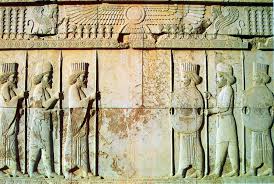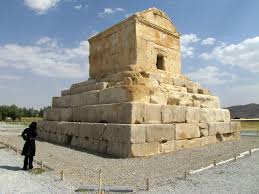This article gives an idea of the role of ancient Persian governor.
The ancient Persian rulers claimed the proud title of “King of Kings” and demanded total obedience and loyalty from their subjects. Under King Darius, the empire was divided into 20 provinces to try to stop any single region from becoming too powerful. Each province was ruled by a governor, called a Satrap.
Satrapies Persia
Satraps were local rulers appointed by the king to govern individual provinces. Their job was to enforce law and order and to collect taxes and tributes. They worked with Persia’s army commanders to defend the empire’s frontiers from enemy attack.

The ancient Persian Governor of a province or satrapy of the Persian Empire was nominated by the king. And given extensive powers. Darius, I reorganized the privileges and duties of his satraps in the 6th cent. B.C.; the number of satraps varied from 20 to 28 during his reign. To prevent the concentration of power in one man’s hands, certain officials, responsible only to the king, checked up on the strap.
The king also regulated the taxes and imposed a fixed sum upon each strap. Alexander the Great revised the system, replacing Persians with Macedonians and reducing their powers. The command of the troops was taken from the satraps. Who lost the right to engage mercenaries and to issue coinage.
What did Satraps Do
Satraps ruled the various provinces of Persia from the age of the Median Empire, 728 to 559 B.C., through the Buyid Dynasty, 934 to 1062 A.D. At different times, Persia’s empire stretched from the borders of India in the east to Yemen in the south and went to Libya.
The term Satrap is derived from the Old Persian word ‘Kshathrapavan’, meaning “guardian of the realm.” One such Satrap was known as Mausolus who lived somewhere around in 353 B.C., Persian satrap. He ruled Caria somewhere between 376 and 353 B.C. He was always more or less independent.
Satraps Significance
One of the satraps who revolted against Artaxerxes II, he subsequently allied himself with the Persian kings. He extended his power greatly, even to hegemony over Rhodes. After his death his wife, Artemisia, erected at Halicarnassus a tomb that he had planned, called the mausoleum.

Considering a vast empire size of Persia, close control of the Satraps was difficult, and there was always the danger they might revolt and attempt to establish an independent kingdom. To keep this from happening, the emperies established military officers. And tax collectors in each satrapy who answered to the Emperor.
Governor in Ancient Persia
The Emperors also established a system of secret police, known as “the eyes and ears of the king”. Who traveled throughout the country with their own military forces and conducted surprise audits and collecting intelligence. This enabled the rulers to maintain close control over a huge empire. Some joined with enemies of the empire, such as Alexander the Great, the Greek leader who conquered the Persian Empire in 331 BC.

Rather than irregular payments of tribute, Darius imposed a tax system by which each satrapy was required to pay annually a set quantity of silver. This was sometimes to be supplemented with horses or slaves.
He also standardized coinage which made a trade within the empire more efficient. He left the local laws of his subjects largely in place. Although he did hire experts to see that they were in harmony with imperial law. This move made governance much easier than had he imposed a uniform law throughout the Empire. Which might have fostered resistance.